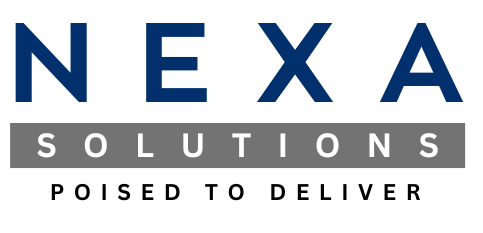
Improving Work Quality and Safety in Construction

The construction industry is a cornerstone of economic development and infrastructure growth, yet it faces unique challenges in ensuring both work quality and safety. With rising project demands and a competitive landscape, the emphasis on improving these aspects is more critical than ever. This blog explores comprehensive strategies and best practices for enhancing work quality and safety in construction projects, ultimately leading to better outcomes for workers, clients, and the environment.

The Importance of Work Quality and Safety
Work Quality
Work quality in construction refers to the standard of the work performed, which encompasses the durability, aesthetics, functionality, and compliance with regulations. High-quality construction leads to:
- Increased Client Satisfaction: Delivering projects that meet or exceed client expectations fosters trust and can lead to repeat business.
- Reduced Costs: Quality work minimizes the need for repairs and rework, ultimately saving time and money.
- Longevity of Structures: High-quality construction ensures that buildings and infrastructure can withstand the test of time and environmental stressors.
Safety
Safety is paramount in construction due to the inherent risks involved. Improving safety standards leads to:
- Fewer Accidents: Prioritizing safety reduces the likelihood of injuries and fatalities on job sites.
- Lower Insurance Costs: Fewer accidents mean lower workers’ compensation and liability insurance costs for companies.
- Enhanced Reputation: Companies known for strong safety practices attract skilled labour and can win more contracts.
Challenges in Achieving Work Quality and Safety
Despite the importance of quality and safety, several challenges persist:
- High Turnover Rates: The construction industry often faces high turnover, making it difficult to maintain a skilled workforce.
- Inadequate Training: Many workers lack sufficient training in quality control and safety practices, leading to errors and accidents.
- Regulatory Compliance: Navigating the myriad regulations can be overwhelming for companies, leading to lapses in compliance.
- Budget Constraints: Tight budgets may lead companies to cut corners on quality and safety measures.
Strategies for Improving Work Quality
1. Implementing Quality Management Systems (QMS) One Consilium
A Quality Management System (QMS) provides a structured approach to ensuring quality throughout the construction process. Implementing a QMS involves:
- Defining Quality Standards: Establish clear standards based on client requirements and industry benchmarks.
- Regular Audits and Inspections: Conduct frequent quality audits to ensure adherence to standards.
- Feedback Loops: Create systems for receiving feedback from clients and workers to identify areas for improvement.
2. Investing in Skilled Labour
A highly skilled workforce is essential for maintaining quality. Strategies include:
- Training Programs: Develop comprehensive training programs that cover not only technical skills but also quality control processes.
- Mentorship Initiatives: Pairing experienced workers with newcomers can enhance skill transfer and improve overall quality.
3. Utilizing Technology
Technology can greatly enhance work quality:
- Building Information Modelling (BIM): This technology allows for improved planning and visualization of projects, helping to identify potential issues before construction begins.
- Quality Control Software: Implement software solutions that allow for tracking quality metrics in real time.
4. Create a Culture of Quality
Encouraging a culture of quality involves:
- Leadership Commitment: Leadership should emphasize the importance of quality and set an example.
- Employee Involvement: Engage all employees in discussions about quality, encouraging them to take ownership of their work.
Strategies for Enhancing Safety
1. Establishing
Comprehensive Safety Programs
A robust safety program includes:
- Safety Training: Regularly scheduled training sessions on equipment use, hazard recognition, and emergency procedures.
- Safety Audits: Conduct frequent site audits to ensure compliance with safety standards.
2. Promoting a Safety Culture
Creating a safety-conscious culture involves:
- Open Communication: Encourage workers to report hazards or unsafe practices without fear of reprisal.
- Recognition Programs: Recognize and reward employees who demonstrate safe practices.
3. Utilizing Personal Protective Equipment (PPE)
Ensuring that all workers have access to appropriate PPE is crucial:
- Training on PPE Use: Provide training on the correct use of PPE, and ensure it is always available.
- Regular Inspections: Conduct inspections of PPE to ensure it is in good condition and replace any damaged items promptly.
4. Implementing Safety Technology
Incorporating technology can enhance safety measures:
- Wearable Safety Devices: Use devices that monitor workers’ vital signs and environmental conditions to prevent accidents.
- Drones and Robotics: Utilize drones for site inspections and robotics for tasks in hazardous environments.
Integrating Quality and Safety
1. Aligning Quality and Safety Goals
Both quality and safety should be viewed as interrelated objectives. For example, a focus on quality can lead to safer practices. An integrated approach includes:
- Joint Training Programs: Develop training sessions that cover both quality and safety topics.
- Performance Metrics: Use metrics that assess both quality and safety, fostering a holistic approach.
2. Continuous Improvement Processes
Implementing a continuous improvement process allows for ongoing enhancement of both quality and safety:
- Regular Reviews: Periodically review processes and outcomes to identify areas for improvement.
- Adaptation to Feedback: Use feedback from audits and employee suggestions to refine practices.
Conclusion
Improving work quality and safety in construction is not only essential for the success of projects but also vital for the well-being of workers and the reputation of companies. By implementing structured quality management systems, investing in skilled labour, utilizing technology, and fostering a culture that prioritizes both quality and safety, the construction industry can navigate its challenges effectively.
The journey toward enhanced work quality and safety is ongoing, requiring commitment from all levels of an organization. As the industry evolves, embracing innovative practices and technologies will be crucial in achieving a safer and higher-quality construction environment. The benefits of these efforts will resonate far beyond the job site, leading to sustainable growth and improved community trust in the construction industry.


HOW CAN NEXA HELP?
NEXA Solutions: Elevating Construction Health, Safety, and Work Quality
Introduction to NEXA Solutions
NEXA Solutions specializes in providing comprehensive software solutions tailored for the construction industry. Our primary aim is to enhance health, safety, and work quality through streamlined procedures. By implementing One Consilium Software, we equip construction companies and contractors with the tools necessary to optimize operations while ensuring compliance with safety standards and improving overall work efficiency.
The Challenge in Construction Health and Safety
Construction sites are inherently hazardous environments, where the risks of accidents and safety violations can have severe implications. Traditional processes often lead to inefficiencies, miscommunication, and lapses in safety protocols, which can jeopardize worker safety and project timelines. To combat these challenges, it’s essential to adopt a systematic approach to health and safety management.
How NEXA Solutions Can Help
-
Streamlined Procedures with One Consilium Software
One Consilium Software is designed to centralize and simplify various aspects of project management, health and safety compliance, and quality control. Here’s how it can specifically benefit a construction company:
-
Centralized Documentation: All safety protocols, checklists, and compliance documentation are stored in one easily accessible location. This reduces the time spent searching for documents and ensures that all employees have the most current information.
-
Real-Time Reporting: The software allows for immediate reporting of incidents or safety concerns. This quick feedback loop helps in addressing issues before they escalate and promotes a culture of safety.
-
Automated Checklists and Workflows: Automated procedures ensure that critical safety checks are not overlooked. Customizable checklists guide workers through safety protocols at every stage of construction, ensuring compliance with OSHA and other regulatory standards.
-
Data-Driven Insights: The software analyses data related to incidents and near-misses, providing valuable insights that help in identifying trends and areas for improvement. This proactive approach allows companies to make informed decisions about safety practices.
-
-
Efficient Staff Training
Implementing new software can be daunting, but NEXA Solutions makes the transition seamless with our focused training program. Here’s how we ensure your staff is up and running with One Consilium Software in under 2 hours:
-
Tailored Training Sessions: We conduct brief, targeted training sessions that are customized to your specific needs. By focusing on the features most relevant to your team’s roles, we maximise the effectiveness of the training.
-
Hands-On Learning: Our training approach is highly interactive. Staff members will engage with the software in real-time, allowing them to become familiar with its functionalities and address any questions on the spot.
-
Training Materials: We provide video tutorials that employees can refer to after the training. This ensures they have ongoing support as they begin to use the software in their daily operations, plus we are always at the end of the phone.
-
Ongoing Support: NEXA Solutions offers continued support after training, ensuring that employees feel confident in using the software and can reach out for assistance as needed.
-
Results and Benefits
By implementing One Consilium Software with the help of NEXA Solutions, construction companies can expect:
-
Improved Safety Compliance: With automated checklists and real-time reporting, the risk of accidents is significantly reduced, fostering a safer work environment.
-
Enhanced Work Quality: Streamlined procedures lead to better communication and coordination among teams, resulting in higher work quality and reduced delays.
-
Increased Productivity: With time saved on documentation and compliance checks, teams can focus on their core responsibilities, leading to improved efficiency and project delivery times.
-
Cultural Shift: As employees become more engaged with health and safety practices, a culture of safety is fostered, which is vital for long-term success in the construction industry.
Conclusion
NEXA Solutions is committed to transforming how construction companies approach health, safety, and work quality. With our expertise in implementing One Consilium Software and our effective training programs, we empower organizations to streamline their processes, enhance safety compliance, and elevate work standards. Together, we can build a safer and more efficient future in construction.
Book a Call
